
BIRDS sing, soar and twitch through our landscapes, lives and language. They were probably among the first animals the first humans really noticed and, after noticing, always comes naming. As Susan Myers describes in The Bird Name Book: A History of English Bird Names (Princeton University Press, £30), their names can come from their appearance (raven), behaviour (dipper), diet (chaffinch), habitat (moorhen), other languages (kiwi), geographical origin (pheasant) or similarities (American robin) and some are named for several characteristics at once. Names vary within and between countries and others were long applied indiscriminately. Scientific nomenclature is itself often romantic, as with the rhea, named after the daughter of Gaia and Uranus, alluding to the flightless bird’s confinement to earth.
The hypothesised three millennia-old proto-Indo-European language contains a word, ghans, that means goose. As are other bird names—cuckoo, hoopoe, rook and turtle dove—ghans is probably onomatopoeic, inspired by the goose’s call. By the 10th century, ghans had become grœde in the Exeter Book, a foundational text of English literature—helping launch geese into folklore, metaphor, proverb and slang as a symbol of foolishness, good eating and the onset of winter.
By 1382, when Geoffrey Chaucer penned Parlement of Foules, birds of many kinds had alighted in every branch of national life, a source of fascination and joy: ‘On every bough the briddes herde I singe,/With voys of aungel in her armonye.’
Sparrow
Denne historien er fra January 11, 2023-utgaven av Country Life UK.
Start din 7-dagers gratis prøveperiode på Magzter GOLD for å få tilgang til tusenvis av utvalgte premiumhistorier og 9000+ magasiner og aviser.
Allerede abonnent ? Logg på
Denne historien er fra January 11, 2023-utgaven av Country Life UK.
Start din 7-dagers gratis prøveperiode på Magzter GOLD for å få tilgang til tusenvis av utvalgte premiumhistorier og 9000+ magasiner og aviser.
Allerede abonnent? Logg på
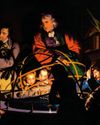
A leap in the dark
The primal play of light and shadow, whether in Leonardo's ever-so-subtle sfumato or Caravaggio's dramatic contrasts, has shaped Western art, as Michael Hall reveals

Beauty and the blimp
Inflammable airships may be gone, but a new hybrid aircraft, capable of delivering eco-friendly aviation, is set to take to the skies with a bang, finds Charles Harris
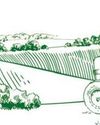
Three wishes for food and farming
Royal hedge planting, the terrible toll on Ukrainian farming and a maiden speech
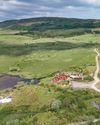
Seeing the wood for the trees
Scotland's much-evolved forestry industry has become a focus for clever investors
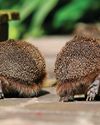
Let's fall in love
Birds do it, bees do it, even educated fleas do it. Laura Parker finds that, when it comes to creatures mating for life, persistence, patience and a little dad dancing are key to success
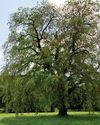
Back from the dead
THREE Wentworth elm saplings have been planted in the grounds of the Palace of Holyroodhouse, Edinburgh, and on the Highgrove estate in Gloucestershire-29 years after what was thought to be the lastknown Wentworth elm died.

A man among men
What makes a master? Beloved of the commercial art world, handled warily by art historians, the word has long been opaque. Michael Prodger investigates its many meanings-and discovers that being male confers an unfair advantage

Unearth one of life's luxuries
Black diamonds are a girl's best friend this Valentine's Day, with Périgord truffle-based skincare from TRUFFE

Adventure awaits
Spend an unforgettable family holiday on the Benmore Estate and experience some of Scotland's finest wildlife and sporting activities

Let the art rule the head
Despite being a world leader in everything from jewellery to fashion and music, the UK is failing to nurture creativity at school and in regional centres. Tristram Hunt, director of the V&A Museum, calls for an urgent review